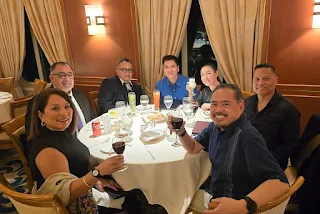A #TagalogTuesday Special by Pinoybuilt
Tagalog, one of the most spoken languages in the Philippines, has come a long way since the pre-colonial era. But as Filipinos migrate and raise families abroad, especially in the U.S. and across the globe, the language doesn’t stay static — it evolves. From the streets of Manila to the suburbs of California and the work camps of the Middle East, Tagalog is being reshaped by experience, environment, and identity.
🌍 The Diaspora Effect
With over 10 million Filipinos living outside the Philippines, the diaspora plays a major role in how Tagalog is preserved, adapted, or even hybridized.
Filipino-Americans: Code-Switching Pros
In the U.S., especially among second-generation Filipino-Americans, Taglish (Tagalog-English mix) has become the default mode of communication at home — if Tagalog is spoken at all. Here’s what that sounds like:
- “Ma, can you get the ulam from the fridge?”
- “Uy, traffic was so bad kanina, grabe!”
It’s efficient, expressive, and uniquely Pinoy-American. But there’s a trade-off: many younger Fil-Ams can understand Tagalog but struggle to speak it fluently. Still, this hybrid language becomes part of their identity — a bridge between heritage and homeland.
OFWs: Keeping It Real and Regional
For Overseas Filipino Workers (OFWs), especially in the Middle East, Hong Kong, and Europe, Tagalog remains a strong cultural anchor. But it’s not just Metro Manila Tagalog. You’ll hear a fusion of dialects:
- Cebuano-Tagalog mix
- Ilocano-Tagalog phrases
- Tagalog peppered with Arabic, Cantonese, or Italian loanwords
“Sandali lang, madame, mag-i-start na ako mag-linis.”
(Wait a minute, madame, I’m about to start cleaning.)
This kind of Tagalog adaptation reflects the speaker’s new context and survival mindset, showing how resilient the language is.
💬 Tagalog 2.0: Hybrid, Flexible, and Alive
Linguists call this “translanguaging” — the act of blending multiple languages to communicate effectively. It’s not “broken” Tagalog or English; it’s adaptive communication.
Tagalog today includes:
- English technical terms: Nagda-download ako ng file.
- Borrowed slang: Sana all!, Lodi, Petmalu
- Internet shorthand: Kbye, Wag na, pagod na ako lol.
Language lives, breathes, and evolves — and that’s not a bad thing.
🧠 So, Is Tagalog at Risk?
Not exactly — but it’s changing. For heritage speakers born abroad, there's a real risk of language loss. But platforms like #TagalogTuesday, Filipino schools, and digital content help reverse that trend. Even TikTok and YouTube creators are helping bring back pride in speaking Tagalog.
💡 Final Thoughts: Embrace the Evolution
Tagalog’s evolution reflects who we are — a global, adaptable, and creative people. Whether you speak fluent Tagalog, just know a few words, or mix it up with English or another dialect, what matters is keeping the connection alive.
So next time you say:
“Can I pahingi some of that?”
Remember — you’re part of the story of Tagalog’s evolution.
📣 Join the Conversation
How has your Tagalog changed while living abroad? Share your version of Taglish or a phrase you love in the comments — or tag us with #TagalogTuesday @Pinoy.built on IG, Threads, or @PinoyBuilt on X/Twitter.
Filipino-American Club of Springstowne Jr. High School (unofficial)
Are Glenn Pingol, Tony Magbitang and J.F. Perseveranda the only ones born in the Philippines, and conversationally fluent in Tagalog?




















0 Comments
Hi! Thank you for dropping by. Please leave us a comment.